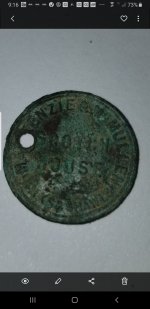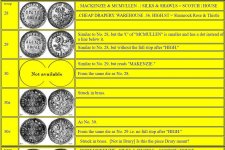Timbersnort
Jr. Member
Looking for help identifying tag token. Says ENZIE & MCMULLEN, SCOTCH HOUSE, W..(cant make out letters) SHAWLS. Detected Benett Branch valley Elk-Cameron Counties.
Think this maybe a scotch bottle tag, not sure age. Learned Enzie was a rural distillery near the harbour village of Portgordon Scotland – then Banffshire, now Moray – from 1827 to 1833.
Think this maybe a scotch bottle tag, not sure age. Learned Enzie was a rural distillery near the harbour village of Portgordon Scotland – then Banffshire, now Moray – from 1827 to 1833.
Attachments
Last edited:
Upvote
18








